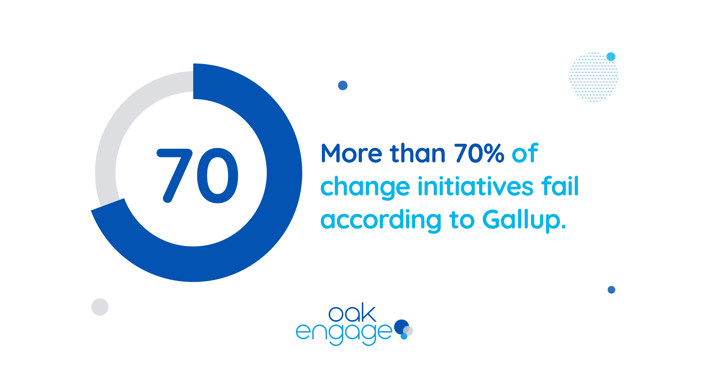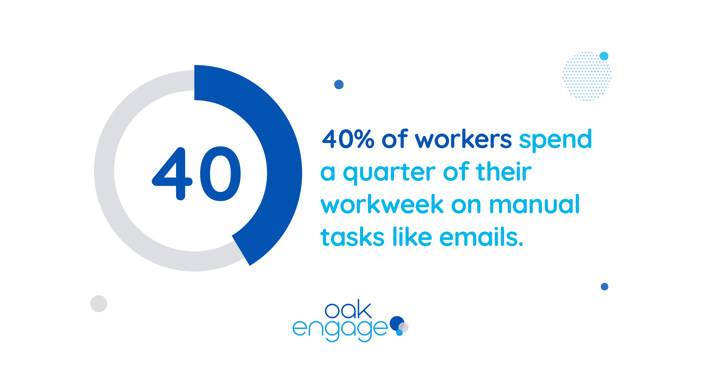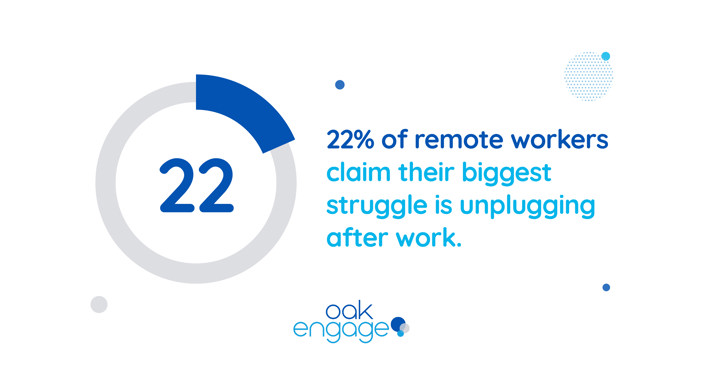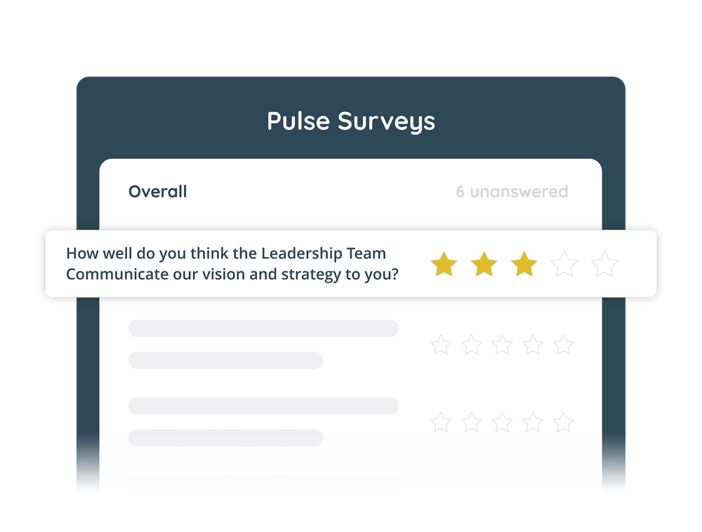Have you finally decided to implement new technology in your workplace?
That means the hard part is over, right?
Well, not exactly.
In most cases, it’s the next step that is the most difficult - and the most crucial for success.
Even though the change in technology may be positive, getting your workforce on board with learning and using a new intranet might be more of a challenge than you originally anticipated.
According to Gallup, more than 70% of change initiatives fail. But this doesn't have to happen if you take the right approach.

In this blog we’ll take you through how to successfully implement new technology in your workplace.
Here’s what we’ll cover:
- Workplace Technology in the Modern World
- The Impact of Technology in the Workplace
- Benefits of Technology in the Workplace
- Why Workplace Technology Initiatives Fail
- How to Successfully Implement New Technology in the Workplace
Workplace Technology in the Modern World
It’s important to recognise that technology in the workplace has become essential for business success.
A business on the cutting edge of technology in the workplace is able to empower its remote workers, reap the cost-saving benefits and connect its employees. No matter where they work.
Modern workplace technology can:
- Provide high-quality products/services
- Enhance customer service
- Enhance user experience
- Reduce waste
- Improve productivity and engagement
All in all, properly utilising technology in the workplace creates a competitive advantage.

If you’re not taking advantage of the benefits of technology in your business, you’re likely already falling behind the competition.
To understand how the current impact of technology in the workplace is so vital, let's look back to see how we got here.
Timeline of the Digital Workplace
1994:
- Intranets were used for the most basic services
- Only for top-down communications
- Used by HR or management team to send information to employees
2000s
- intranets developed to a more comprehensive enterprise portal
- Social features were slowly added
- Content management features were added
2010s
- Digital workplace solutions: centralised solutions for different apps & platforms
- Social & collaborative features added
- Cross departmental communication benefits
2020s
- One-stop-shop: social tool
- Employees at the heart of the intranet
- Big focus on mobile and wireless technology
- Cloud services expansion
Now that we’ve covered the brief history of technology, let's move on to the impact of technology in the workplace and the benefits you’ll receive.
The Impact of Technology in the Workplace
So, what’s the impact of technology in the workplace?
Overall, it is incredibly strong.
Companies can now get their hands on applications, software or platforms that can help enhance their business initiatives.
Whether that's to foster collaboration between remote employees, improve customer satisfaction, build a stronger company culture, drive revenue or eliminate wasteful inefficiencies.
However, ignoring future workplace trends and being slow to implement technology in the workplace can give your competitors who have prioritised getting ahead of the curve a huge advantage over you.
This can negatively impact workplace morale, decrease revenue, and give your brand a poor reputation among consumers.
Benefits of Technology in the Workplace
Not sure whether you want to implement new technology in your organisation?
Well, the benefits of implementing great technology in your workplace are endless!
Here are the 4 main ones:
1. Higher Productivity and Engagement
When you give your employees access to the tools and technologies they need to do their jobs and let them use them in the way that works best for them, they’ll be more efficient and engaged - and therefore much happier.
In fact, highly-engaged businesses have :
- 41% less absenteeism
- 17% more productivity
- 10% better customer ratings
- 20% more sales.
When both a higher quantity and quality of work is being produced by your employees, it drives revenue and boosts profit margins.
Happy employees are also more likely to stay loyal to your company long-term rather than going to work for the competition, which also saves you on employee turnover costs.
If you’re wondering how much revenue you could save per year with an engaged workforce, download your calculator below to discover how having an engaged workforce can save you money.
2. Streamline Repetitive Processes
Did you know 40% of workers say they spend at least a quarter of their workweek on manual, repetitive tasks such as sending emails and entering data?

Leveraging automated technology in the workplace puts these tedious processes on autopilot so your employees can spend more time focusing on the business, such as building new client relationships or providing more attentive customer service.
Automated processes are also more accurate. For example, using a software solution to automatically collect, upload, or sync data into a system of record reduces the risk of an employee accidentally inputting the wrong number that could skew an entire data set.
3. Overhead Cost Savings
By implementing new technology in the workplace, more employees can work from anywhere, and still have great communication with their team.
Companies of all sizes can experience significant decreases in operating costs by letting their employees work from home and use their own devices.
It makes sense right?
With fewer employees in the office, organisations need less space, materials, and utilities.
As a large-scale example, American Express claims its remote work program has not only improved productivity but also saved $10-$15 million annually in real estate costs.
A Cisco study also found that companies save an estimated $3,150 annually per employee that uses their own device between hardware costs, data plans, and the value of time savings.
4. Increased Customer Satisfaction
Technology in the workplace has allowed businesses to better market to their customers and provide faster and more personalised customer service.
From leveraging data to determine where to place targeted ads, to providing immediate service through automated emails, there are endless opportunities for technology to enhance your user experience.
This can go a long way in differentiating your brand from others, leading to long-term customer loyalty and higher revenue.
Negative Impacts of Technology in the Workplace
While there are endless benefits of technology in the workplace, it’s important to know what the negative effects can be so you can work to overcome them in your workplace.
Here are the 3 main negative impacts of technology in the workplace:
1. The Inability to ‘Switch off’ After Work
A strong work/life balance is important for employee productivity and mental health.
When employees are so focused on their devices all day, it can be difficult to detach and put them down after work hours.
This is especially challenging for remote employees who often feel like they need to be reachable at all times to prove they’re actually working.
In fact, Buffer’s 2019 State of Remote Work report found that 22% of remote workers claim their biggest struggle is unplugging after work.

2. Higher Loneliness Rates for Remote Employees
Buffer’s report also found that 19% of remote employees say loneliness is their biggest struggle with working remotely. 17% said it was a lack of communication with their team members.
If your remote employees are unhappy and unable to effectively communicate with their coworkers, their productivity and quality of work will suffer, and they’ll likely start looking for another job.
To combat these issues and reduce turnover expenses, it’s vital to give your remote employees access to the tools they need to not only do their job but to build and maintain meaningful relationships with their team members.
3. Threats of Data Breaches
With organisations now using multiple platforms and divides at once to manage various aspects of their business, security can be a challenge for every modern office.
When employees have access to all this interconnected data, it can expose the business to cybersecurity threats.
For example, if a hacker gets into one employee’s user account for specific software, they’d likely be able to gather data from the other apps it is integrated with.
To combat this, make sure your employees are using strong passwords and two-factor authentication for their accounts and set up administrative controls to limit confidential data access to only those who really need it.
Why Workplace Technology Initiatives Fail
So why do workplace technology initiatives fail?
Picture this: You’re rolling out a new piece of technology or system that will make your company run better and more efficiently. You’re excited about the possibilities it has for your company's growth.
Your employees? Well, they need a bit more convincing.
After spending many months researching, justifying and preparing to introduce a new workplace technology, the last thing you want to happen is for your employees not to use it.
Unfortunately in many cases, this does happen.
And here are 5 common reasons why:
The Technology Is Too Complicated
Large enterprise platforms are particularly vulnerable to failure because there are so many layers and steps involved when it comes to implementing them.
A new system affects many different processes and departments so any incorrect configuration can have significant and costly consequences.
On-premise systems are also expensive to implement support compared to cloud-based software.
Failing to Articulate the Need for Change
Your employees need to understand the reason for the change in technology.
They’ll want to know:
- Will it help make them more productive or make their jobs easier?
- Will it help the company increase profits, which could translate into better job security or better compensation for them?
If the reason for the change is not compelling enough, they won’t be convinced.
Failing to Integrate With Existing Solutions
Implementing new technology that does not work well with existing software and applications is frustrating to everyone.
It ultimately just slows everyone down and makes employees deter from using it.
It’s Not Mobile or User Friendly
Employees expect the technology they use in the workplace to be portable and as intuitive as the apps on their smartphones.
If the platform that you’ve implemented doesn't have a mobile application, you should expect it to have low adoption rates for employees.

Not Giving Employees the Tools to Change
In any organisation, people are overloaded with daily responsibilities. So don’t bombard them with change, too.
Make sure they have enough time and the skills needed to handle the change, as well as the right tools. If employees don’t have either, they’ll likely be stressed.
So don’t be surprised if you see some employee turnover as a result.
How to Successfully Implement New Technology in the Workplace
So how can you roll out new software or device to your team without the backlash and growing pains?
We’ll take you through the 5 core ways to implement new technology in your business successfully:
1. Focus on Technology That Will Solve Pain Points
The purpose of implementing new technology in the workplace is to provide solutions to problems that your company may be facing.
Some solutions may be obvious, but others require a little bit more investigation.
You should also include your employees in these decisions.
Once you’ve narrowed it down to your top two to three choices, why not email your team explaining why you’re interested in those options and invite anyone to research the tools and share their thoughts?
Their feedback can be vital in helping you choose the right tool for your team. And these workers will become internal advocates for workplace technology and help foster adoption.

2. Assemble an Implementation Team
Why do you need an implementation team?
Many implementation efforts fail because someone underestimated the scope or importance of the preparation stage.
The first step in the implementation process is assembling a team to take on three crucial tasks:
- Make sure the project receives appropriate resources.
- Overseeing administrative details.
- Managing conflicting priorities.
To do these three things, you'll need an internal "sponsor" for the new technology, a project manager, and an "integrator."
3. Make a Solid Plan
Because so many software implementations experience delays, you need a timeline with clear milestones to stay on track. That timeline could include:
- A free trial period where you gather input from employees who will use the technology
- An initial pilot program or proof of concept before you roll it out to the larger organisation
- Gathering and converting all the data you'll need to input into your new system
- Setting up workflows and processes with help from your workplace technology vendor
- Testing and validating these processes work as intended
- Your official go-live date
- Introducing employees to the new solution
- Hosting training sessions by role or department
- Gathering feedback
- When you will stop supporting any previous systems you had in place
4. Train Your Employees
Not all technologies are user-friendly. New technologies are often complicated and require extensive training.
Providing engaging training sessions is key to a successful implementation. Keep in mind a few different aspects of an effective training session:
- Everyone has different learning styles and needs. Tailor your training sessions to all types of learners by providing a range of materials and options.
- Make the training personal - let people know why this matters to them, and how it will impact their day-to-day work.
- Ask for feedback from users at every stage in the implementation.
5. Make the Launch Exciting
While you don’t need to oversell your new technology, there’s no harm in making the launch and training sessions something to celebrate.
Crafting a presentation that is enjoyable and engaging for your employees can help build interest in the new technology and make the transition period less of a struggle.
Still, struggling to drive adoption?
If you’re still struggling to drive the adoption of new technology in your workplace, it might be helpful to read our Intranet Business Case Step by Step Guide and download your own template to collect your research.





